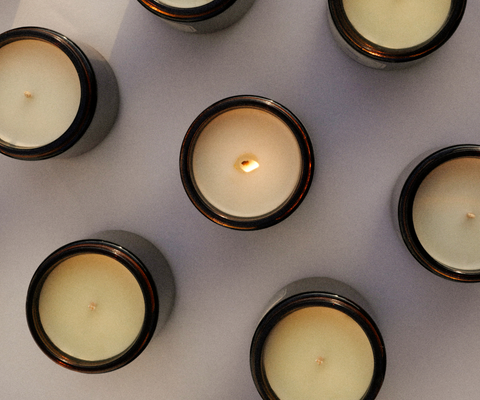Stressed? Light a candle. Need to take a relaxing bath? Light a candle. Guests coming over? Light a candle. These days candles have grown from mere objects for light to ones that comfort us with soothing aromas. However, beneath the pleasant facade of many home fragrance products like scented candles, lies a lesser-known reality that could be compromising the air quality of our homes and our health.

We did some research on the potentially harmful ingredients often found in candles and home fragrances and were quite shocked with what we found.
The trouble with synthetic fragrances
Synthetic fragrances are engineered scents designed to mimic natural aromas at a fraction of the cost. While this might sound like a win for both consumers and brands, the drawback lies in the complex cocktail of chemicals these fragrances often contain. Many are derived from petrochemicals, which can emit volatile organic compounds (VOCs) into the air, contributing to indoor air pollution. VOCs are not just a buzzword; they have been associated with a range of health issues, from headaches and dizziness to more severe long-term effects like respiratory distress and even harm to the central nervous system.
The allergy and irritation factor
For those with allergies, asthma, or sensitivities, synthetic fragrances can be particularly problematic. Exposure can trigger a range of reactions, including skin irritation, respiratory issues, and migraine headaches. The dilemma is compounded by the fact that many brands aren't required to disclose the specific ingredients that make up their "fragrance" blend, making it challenging for consumers to identify potential allergens or irritants.
Natural candles
The good news is that awareness is growing, and with it, the availability of healthier, more natural alternatives. When shopping for home fragrances, look for those made with natural essential oils. These products not only provide the sensory pleasure of scent but also offer the therapeutic benefits associated with aromatherapy. Additionally, opting for candles made from natural waxes like soy or beeswax can further reduce the release of harmful chemicals into your home environment.
Creating a fragrant yet safe space
Beyond choosing healthier products, there are other ways to infuse your home with delightful aromas safely. Consider natural methods like simmering herbs and spices in water on the stove or creating your own potpourri with dried flowers and essential oils. Not only are these alternatives free from synthetic chemicals, but they also add a personal touch to your home's scent story.
While the convenience, price and allure of synthetic fragrances in candles and diffusers are undeniable, I mean gingerbread snickerdoodle cookie candles?
It’s time to ask if the potential health risks they pose are worth it at all.





















